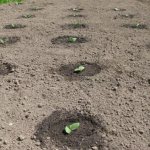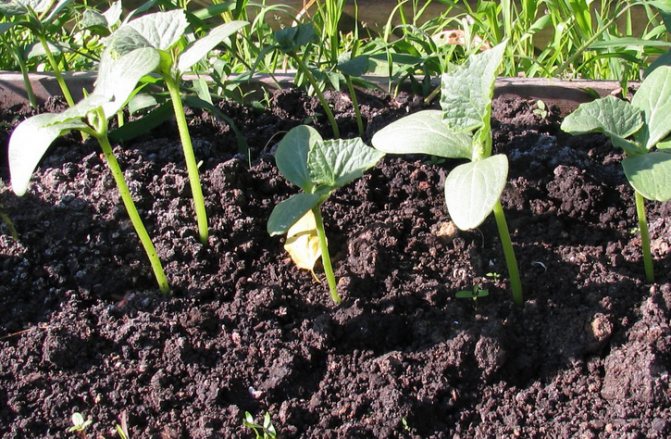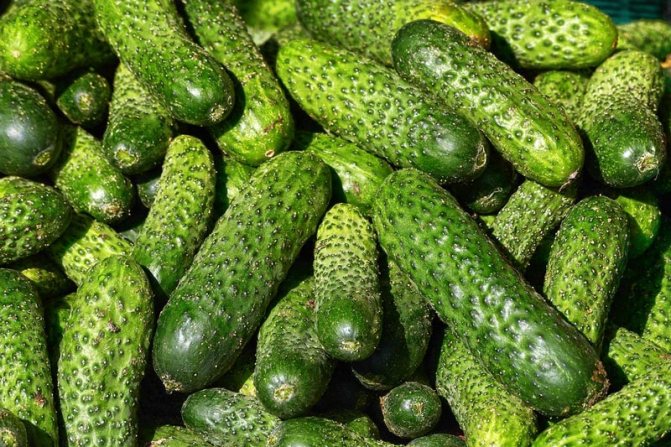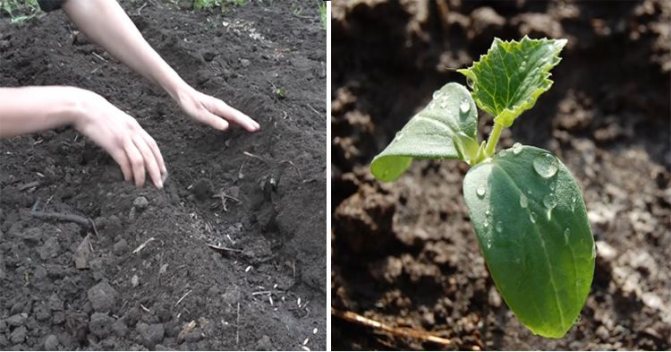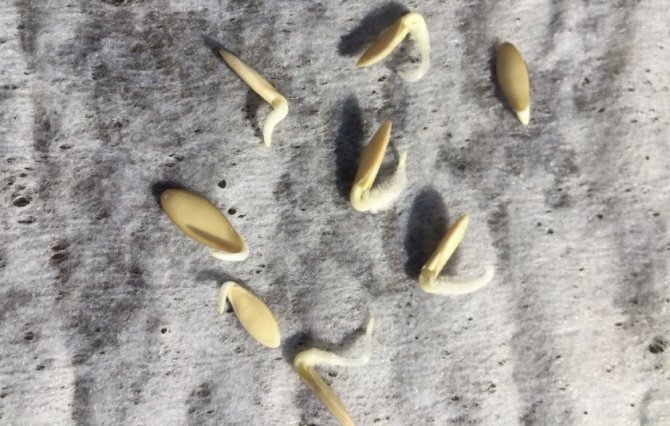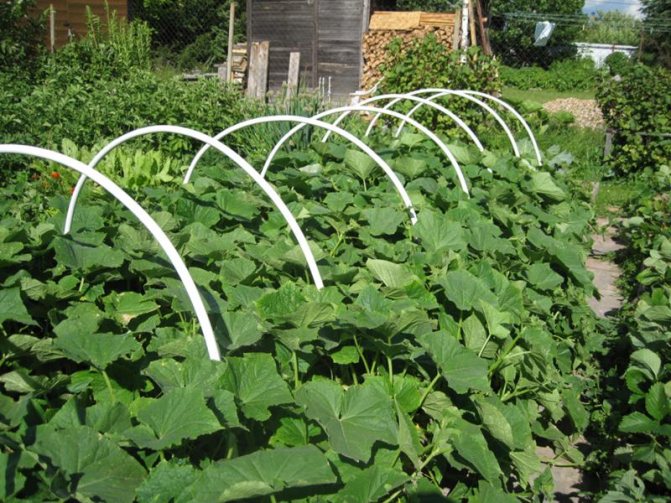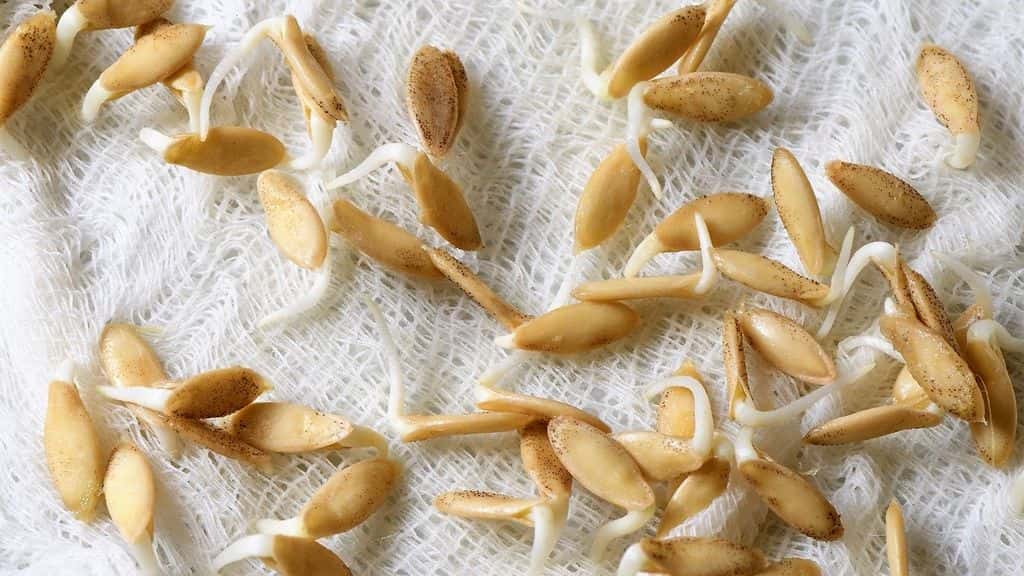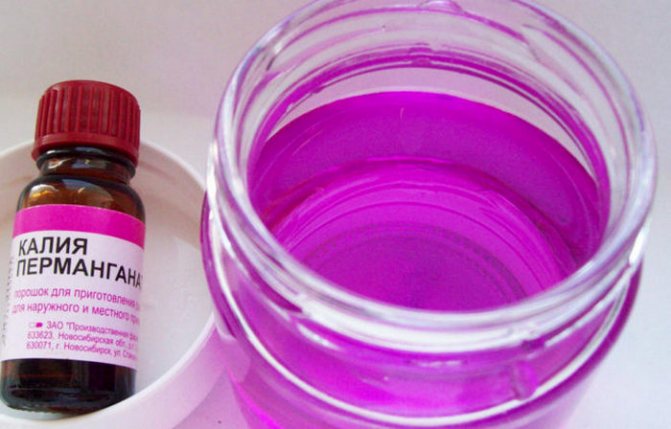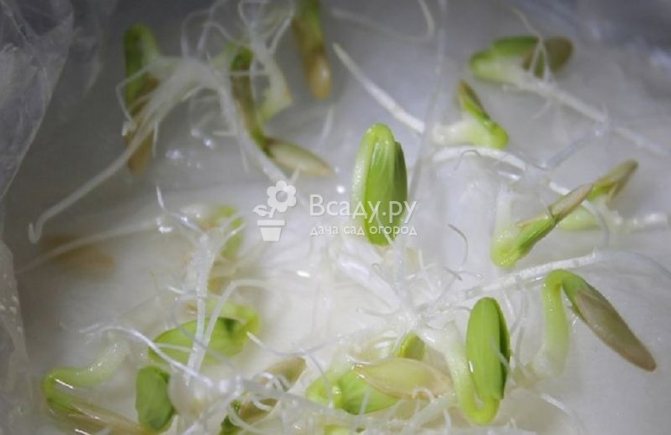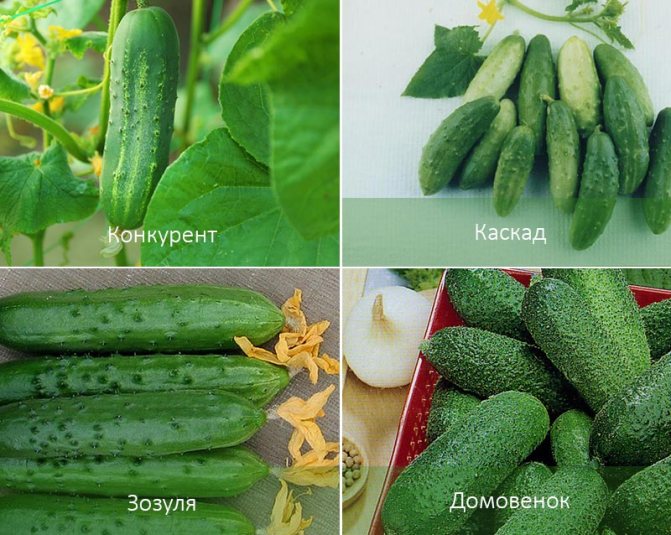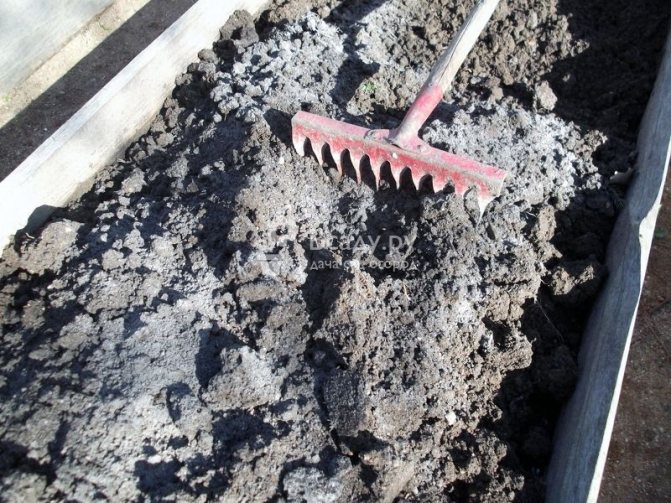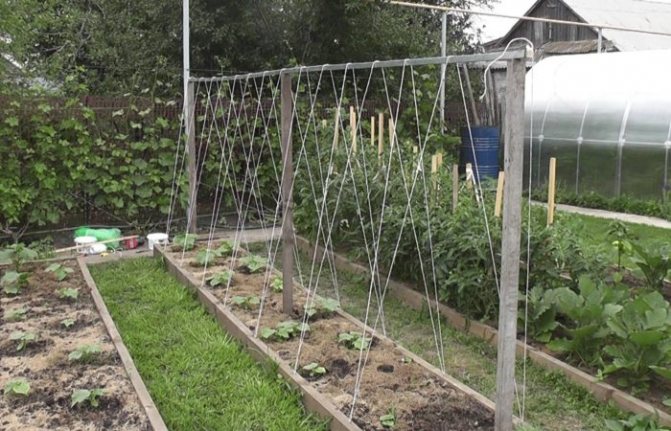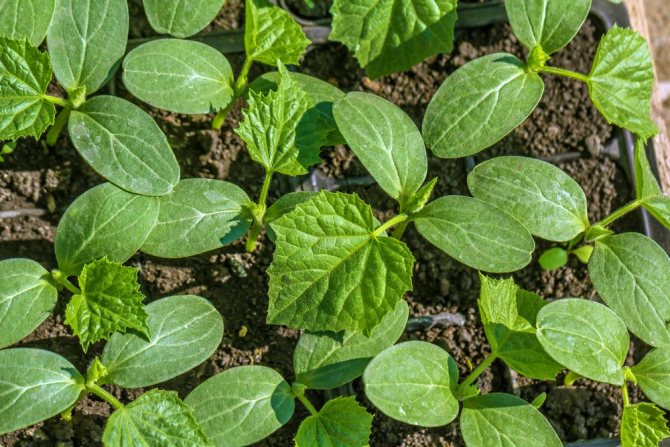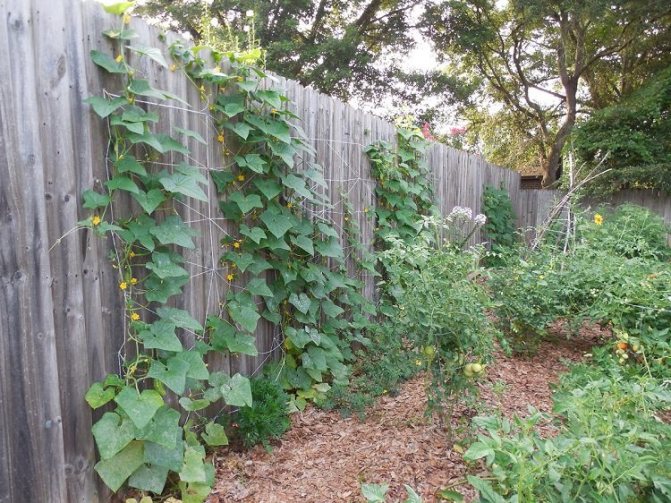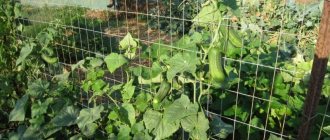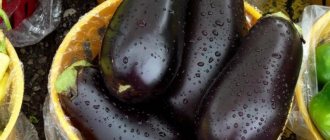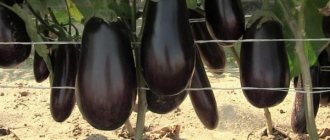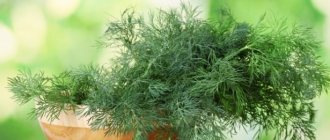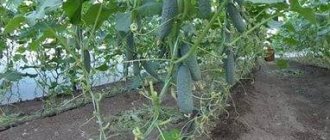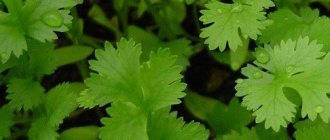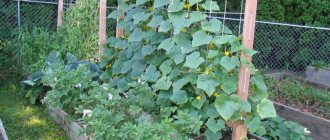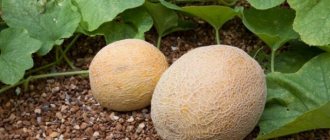Thanks to their excellent taste and relative ease of cultivation, cucumbers have become regular regulars in every vegetable garden (they are even grown on the windowsill!). Despite the fact that this culture is very unpretentious, not every gardener manages to grow cucumbers. withoutseedling method... The reasons for this failure, as a rule, lie in improper or lack of seed preparation, as well as in the direct planting procedure, or incorrect subsequent care of the seedlings. However, you can achieve success in this business without any problems if you follow quite simple rules!
For information on how to properly plant cucumbers in open ground with seeds, read further in this article, in which you will find tips, recommendations and step-by-step instructions for sowing cucumbers directly into the ground.
Seedling method: pros and cons
There are two ways to plant cucumbers: by sowing seeds directly into the garden bed or by growing seedlings first.
The second method is more time consuming, but is considered preferred by most gardeners. Especially in central Russia and northern regions, where spring comes much later.
Growing seedlings in a heated greenhouse or on a windowsill, the owner provides himself with early cucumbers.
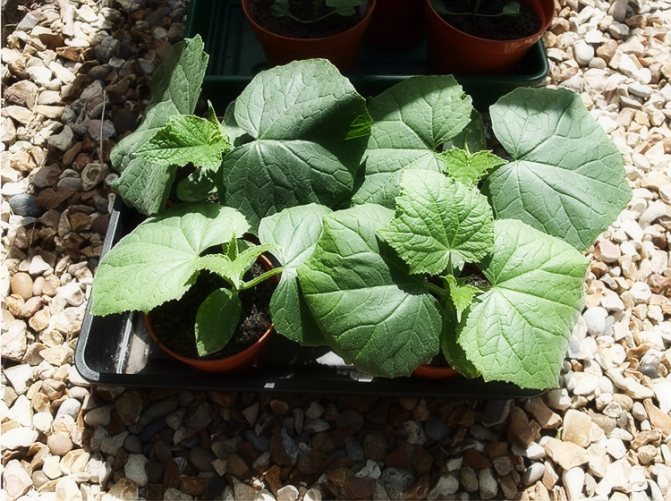
The advantages of this method:
- seedlings fall into open ground after the end of frost, there is no need to fear that they will be damaged by the cold;
- in the process of indoor cultivation, it is easier to follow young cucumbers, assessing their condition, and carry out top dressing;
- the seedling method of growing allows you to get the first cucumbers in the open field at the end of May. But such cucumbers leave very quickly and by the month of July the lashes usually dry up.
If the size of the estate allows, it would be good to find a place on it for sowing cucumbers. They appear later, but bear fruit safely until the end of the season. During the summer, you can always sow new plants to replace the drying lashes.
Growing cucumbers in seedlings
This method is suitable for regions with cool and lingering springs. There are several more advantages of pre-growing seedlings:
- allows you to get an early harvest in late spring - in May;
- young cucumbers fall into the ground after return frosts and there is no need to be afraid of low soil temperatures;
- easier to inspect seedlings, and fertilize at home.
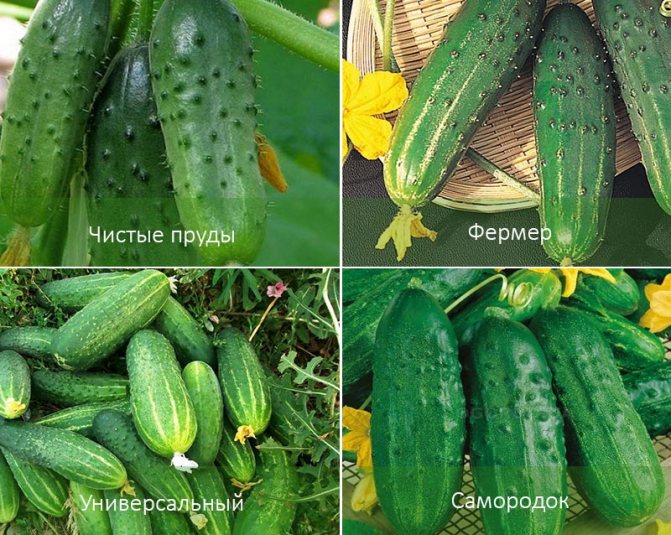

However, like any other, the seedling method has its drawbacks:
- The growing process is quite long and laborious. It is necessary to pre-treat the planting material and prepare a nutritious soil mixture.
- The bushes obtained in this way quickly cease to bear fruit and dry completely by the middle of summer.
Preparing the soil for cucumber seedlings
It is better to prepare the soil for growing any seedlings on your own and store it in the fall. Purchased substrates can bring unpleasant surprises in the form of fungal diseases.
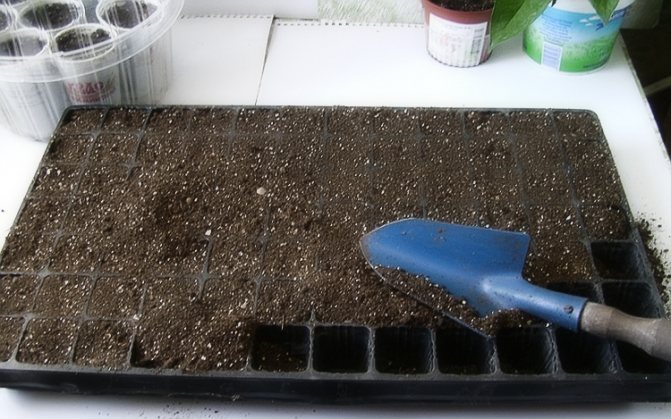

Cucumbers require light, loose soil, neutral in acidity or slightly acidic.
For seedlings of cucumbers, high quality soil is needed, mixed in equal proportions with humus. You can take well-rotted mullein or horse dung. A glass of wood ash is added to a bucket of such a mixture.
To make the soil loose, sawdust or peat are mixed into it. About one third of the total.
The mulching element is best applied before sowing seedlings. Coniferous sawdust is not suitable; it increases the acidity of the soil. It is important to allow the sawdust to refill before use. If this is not done, it is imperative to make additional nitrogen fertilizing. The sphagnum peat substrate requires special attention, as it dries out very quickly.
How to pick a good variety of cucumbers
Advice! Experienced gardeners advise at the beginning of the season to sow 4-6 pieces of cucumber seeds of different types. In case of unfavorable weather conditions this season, such a variety will not leave you without delicious and crispy cucumbers.
Watch the video! How to choose varieties of cucumbers? Which variety is best?
For planting seeds, zoned species, as well as hybrids, are better suited. Such a seed, which has been produced for a long time in the horticultural economy of one region, perfectly adapted to its type of soil and climatic conditions. Such varieties will develop better, it will be easier to tolerate local weather. In addition, they require minimal maintenance costs to grow them.
You can choose the best variety by studying review articles about the popular and best varieties of cucumbers:
26 best varieties of cucumbers for pickling and canning
The best varieties of gherkin cucumbers are the most productive
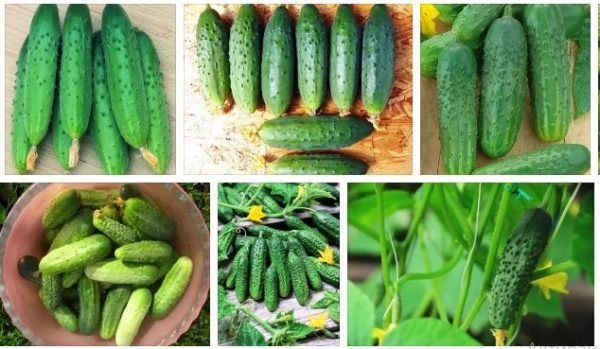

The best varieties of cucumbers for Siberia for greenhouses
17 best varieties of cucumbers for Siberia for open ground
The best varieties of cucumbers with photos for the Moscow region for open ground
The best varieties of cucumbers for the Moscow region in greenhouses
The best varieties of bunch cucumbers for greenhouses
The best varieties of bunch cucumbers for open ground
Preparing seeds for sowing
The selection of seeds begins in the garden. The best representatives of the variety are allowed to ripen on a whip, they are removed only when the skin acquires an orange tint and cracks. Seeds are selected only from the front of the fruit to prevent bitterness. They are grinded and fermented for several days in a little water, like tomatoes.
This is necessary in order to free them from liquid without damaging the seeds. All seeds that will float at the same time must be thrown away.
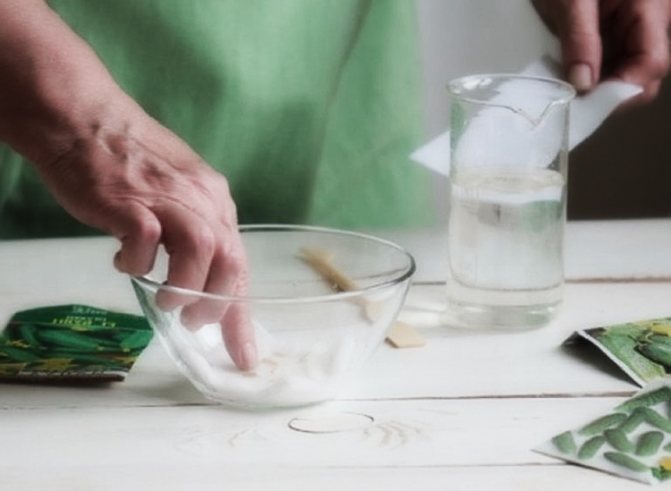

Upon completion of fermentation, the seeds must be dried and sorted. If there is no shortage of planting material, then it is better to leave only large and symmetrical ones.
These seeds are soaked for 12 hours in a pink solution of potassium permanganate for disinfection, dried and put into paper bags. Cucumber seeds are stored at room temperature in a dark place. They do not lose germination until 5-6 years.
An interesting property: the germination of cucumber seeds increases during storage. Therefore, before sowing, it is better to withstand the seeds for two to three years.
Planting schemes for cucumbers
There are various layouts of cucumbers in the garden. There are three most common.
- The ordinary method involves planting cucumbers in the garden in just one row, therefore, a free passage is organized between the rows, the distance between the rows is about a meter (in greenhouses it is reduced to 70 cm). Plants are placed in rows at a distance of 15-30 cm from each other.
- The tape (two-line) method involves placing two rows on a standard bed at a distance of 30-50 cm from each other. If there are several beds (and therefore tapes), between them leave from 90 to 150 cm. Sowing (planting) of cucumbers is carried out with approximately the same density as in a single-row arrangement.


In summer cottages, tape planting is one of the most popular
- Square-socket landing pattern. In this case, the nests are located at a distance of 65–70 cm from each other, sometimes in a checkerboard pattern. Up to a dozen seeds are sown in a hole with a diameter of about 12 cm, and after emergence, 5–6 of the most developed and conveniently located plants are left.Assuming such a scheme, it is possible to grow several specimens in a pot at the same time at the seedling stage.
Pre-boarding activities
It is necessary to sow cucumbers for seedlings a month before planting the plants in the ground. Usually these works begin in March.
Immediately before planting, the seeds are checked again for germination with salt water. They are dipped in a glass of water with a dissolved teaspoon of salt, shaken and left for 10-15 minutes. Everything that surfaced is thrown away.
The remaining seeds are stimulated and hardened. First, they are warmed up near the battery for two days.
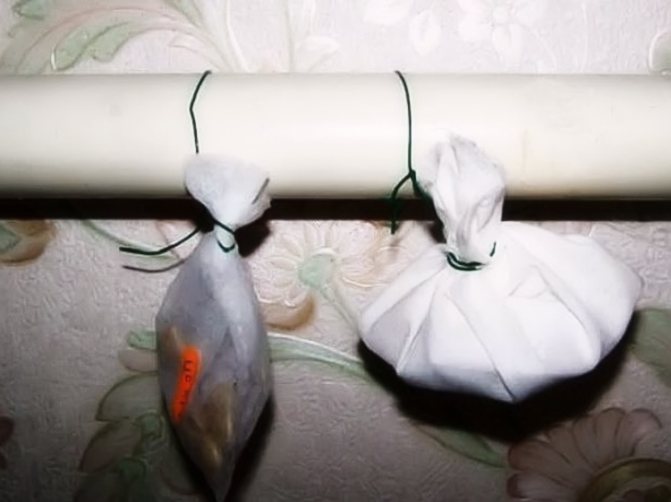

Then they are kept in a thermos with very hot water for two hours (the temperature should be such that the finger can barely endure). And then, wrapped in cloth, they are sent to the lower shelf of the refrigerator for about twelve hours.
If the germination of seeds is in doubt, they can be treated with a growth stimulant. Cautious owners subject them to potassium permanganate processing a second time.
After all the procedures, the seeds are left to germinate between two layers of damp cloth in a cool place.
When the seed hatches and the root reaches half of its length, you can start sowing.
Growing problems
The appearance of a cucumber can be indicative of a lack of certain nutrients:
- Magnesium - along the edge and between the veins, the leaves have become bright green with a yellow border.
- Phosphorus - there is no border, but the yellowness on the leaves is more spotty and intermittent.
- Iron - the veins are clearly visible, they are darker than usual.
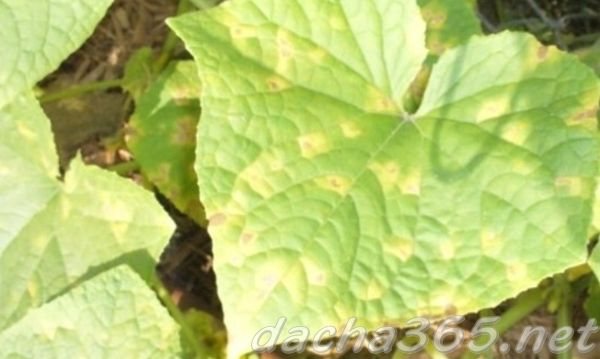

By the way! Yellowing of the leaves may indicate a lack of calcium. In any case, you must immediately fertilize the cucumbers with micro- or macroelements in liquid form.
Calcium and magnesium are found in dolomite flour. Liquid root dressing is carried out with this solution, adding 9% vinegar 100 g per 10 liters of water. It will improve the absorption of the fertilizer and turn it into a chelated form.
Important! Yellowness with a marbled streak or small mottling may indicate the defeat of cucumbers with a spider mite.
How and where to plant cucumber seeds for seedlings
Seeds are sown in pots with soil at the rate of about 0.3-0.5 liters per seedling root. The capacity can be any:
- cardboard or plastic boxes - it is imperative to make several holes in them for the outflow of liquid;
- special peat cups, in which the cucumbers are then planted directly into the ground, have only one drawback - they very quickly lose moisture;
- cellophane rolls fixed with a stapler or paper clip - to get to the root when planting, they are simply unrolled.


The pots are placed back to back on a common tray for easy maintenance. Fill with prepared soil and sow two seeds in them in order to remove a weaker shoot later. Sowing depth no more than 3 centimeters.
If the seeds are planted in a common container, then the distance between them is kept two centimeters and three centimeters between the rows. With such a planting, you will have to dive the seedlings later. Not everyone finds this procedure helpful.
The container with seedlings is watered, covered with a damp cloth and placed in a dark place until germination. For about 5-7 days. The optimum temperature for seedlings should be from 18 to 25 C. Overheating is no less dangerous than cold.
Seed preparation
It will not be difficult to grow a crop. You just need to take care of the purchase of planting material in advance. Buy seeds only in specialized stores, from trusted suppliers.
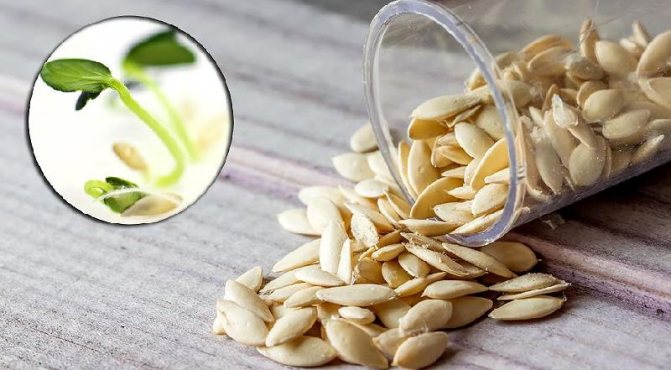

Calibration
Be sure to select seeds, reject those that come up. They need to be poured with a glass of water: those that float up are considered marriage. Only large and dense seeds are sown.
Warming up
Warm up the planting material to destroy the spores of pathogenic fungi and bacteria. You can expose the grains to short-term heating, the temperature should not exceed 50 degrees.
Disinfection
Treat the grains with a fungicide and a non-concentrated solution of potassium permanganate. Such processing will help in the future to avoid the appearance of fungal diseases.
Attention! Etching should be carried out for at least 20 minutes. Then rinse the beans with cold, clean water.
Soak
Grains should be checked for germination, then soaked for swelling for a day.
Hardening
In order to increase the resistance to temperature drop, the planting material is hardened. Swollen grains are placed in the cold for a few minutes.
Attention! The seeds should not be flooded with water.
Germination
Place the grains on a damp cloth, let them swell. When planting, the seeds should not be deepened too deep, as this can significantly slow down the development of the plant. To awaken the bud, which will give an impetus to development, the seeds must be soaked in warm water.
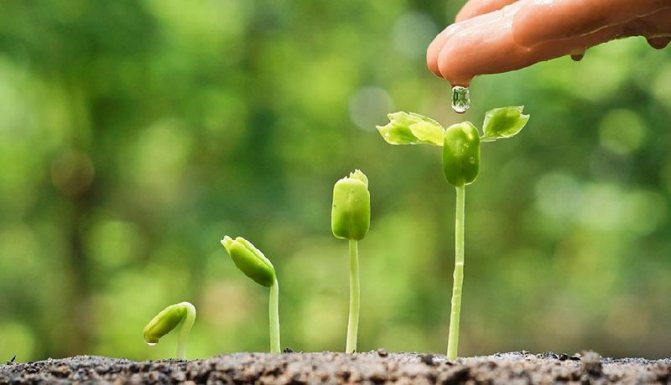

Crop care
It is good if it is possible to allocate a separate room for seedlings with a controlled temperature (ideally, a heated greenhouse).
Not having such conditions, resourceful gardeners organize mini-greenhouses right on the windowsills, fencing boxes with seedlings from the room and window with cellophane screens. This creates a higher level of humidity.
The first 4-5 days young shoots should be kept at a temperature of about 20 C. Then it rises to 25 C. Drafts should be avoided throughout the growing period.
When the sprouts rise so much that they can be assessed, the weaker one is carefully removed under the root with nail scissors.


Direct landing
Step-by-step instruction:
- Furrows or holes are made according to the scheme described above.
- Sprinkle lightly with water.
- Dry seeds are buried 1.5-2 cm with an interval of 5-10 cm.


Advice! If the seeds are germinated or have 100% germination, they can be sown immediately according to the scheme recommended for a particular variety. Usually 1 sq. m there are 4-5 bushes: 20-40 cm by 60-100 cm).
- It is recommended to sow 2-3 seeds in each hole in order to choose the strongest plant later.
Advice! To protect the seeds from ants, sprinkle them with tobacco dust or mustard oil cake on top. In addition, tobacco dust additionally protects against nematodes.
- Lightly watered again.
- The pits are covered with nutrient soil.
Watering and feeding
Watering should be done often - once every two days. Warm melted or settled water. This should be done in the morning, at the beginning of daylight hours. Cold and hard water is harmful to seedlings.
Cucumber foliage loves bathing, moisture can be sprayed from above with a spray bottle.
A little trick: so that water does not stagnate in the pots, they can be installed in a plastic mesh box, which, in turn, can be raised on a stand so that air circulates under the container with seedlings.
Top dressing is carried out when the first pair of leaves appears.


Mineral fertilizers for cucumbers
- specialized ready-made mixtures for cucumbers;
- urea 20 g, potassium sulfate 20 g, superphosphate 50 g, diluted in ten liters of water.
Organic fertilizers:
- chicken droppings or mullein, diluted with warm water in a ratio of 1:10;
- a three-day infusion of onion peels, banana peels or eggshells, prepared from three parts of water and one part of crushed biological material;
- wood ash diluted in hot water in a ratio of 1:10;
- an aged solution of 1 g of bread yeast in a liter of water.
Seed preparation
Before starting preparation directly for sowing, cucumber seeds are calibrated and stratified. Calibration (selection of seeds suitable for sowing) is carried out manually at first. All broken and empty grains are rejected, after which the seeds undergo stratification (heating) near heat sources at a temperature of +28 - + 32 ° C for 2 - 4 weeks.
Next, the seeds are sent for a test of viability in a saline solution: edible salt 30 g / 1 liter of liquid, in which the seed is kept for no more than 10 minutes.Cucumber grains, which have sunk to the bottom, are suitable for sowing, they work with them further, the floating seeds are removed.
At the next stage, the seeds are disinfected in potassium permanganate (pale solution), brilliant green solution (the pharmaceutical composition is diluted 1: 1 with settled water) or garlic infusion (2 squeezed cloves / 150 ml of water). In potassium permanganate, the sowing material is kept for 20 minutes, in garlic infusion and brilliant green solution for about 2 - 4 hours. After the seeds are washed with warm running water.
Before planting, the seeds are soaked overnight in nutrient formulations with fertilizers or growth stimulants. During this time, the seeds are saturated with useful microelements and swell. From fertilizers, you can use nitrophoska (5 g / 1 l) or boric acid (1 g / 1 l), from growth stimulants - the drug Zircon, Epin extra, potassium and sodium humate according to the instructions.
It is not necessary to carry out germination before planting on open ground beds, the main thing is to plant with seeds according to all the rules.
Light mode
Cucumber is a short day plant. For intensive development, seedlings need individual lighting:
- for them you need to choose the brightest place, but not in direct sunlight;
- daylight hours for cucumber seedlings should last ten hours;
- if there is not enough natural light, fluorescent lamps are installed above the boxes.
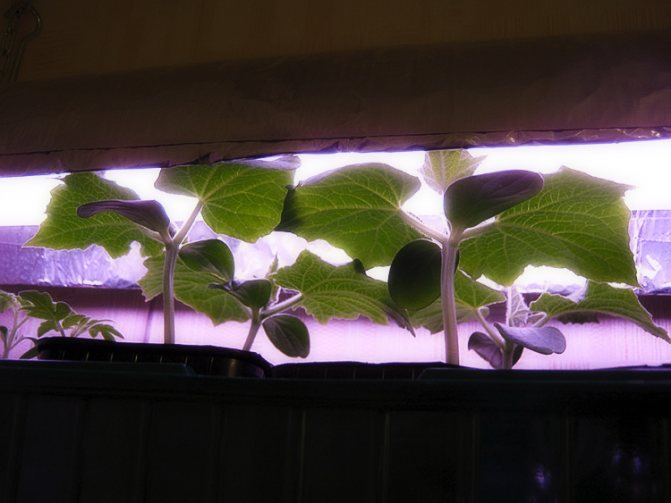

Selection and preparation of the garden
The area for planting cucumbers with seeds must be prepared in the fall. For this, the land is fertilized with rotted cow dung and dug up. If for some reason it was not possible to fertilize the soil in the fall, then this is done in the spring. To do this, use the same manure, but additionally fertilize it with wood ash. The whole mass is placed in an early dug hole. From above, the bed is covered with a layer of earth, watered with water and covered with polyethylene. After two weeks, the soil is ready for planting cucumbers.
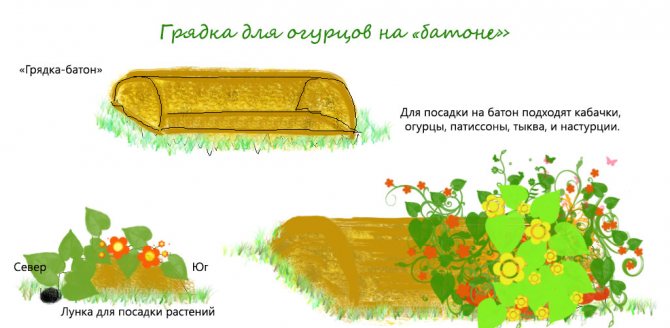

For good growth of the cucumber culture, it is necessary to prepare a special bed. First of all, a place is selected, observing the rule of crop rotation.
Crop rotation is the sequential rotation of different garden crops for the best yield. The fact is that various fruits and plants consume certain nutrient minerals from the earth. Therefore, the correct alternation allows you not to deplete the soil, as well as to get a rich harvest.
A cucumber crop is best planted after:
- Luke;
- garlic;
- pepper;
- tomato
- cabbage;
- carrots;
- potatoes;
- legumes (peas, beans, peanuts).
Onions and garlic are the most favorable precursors for all plants in general. Potatoes, peppers, and tomatoes perfectly prepare the soil, disinfecting it. Legumes fertilize the soil abundantly with nitrogen, which is a favorable environment for the cucumber. There is also a list of vegetables, after which it is forbidden to plant cucumbers.
These include:
- zucchini;
- pumpkin;
- squash.
Observing the scheme of planting cucumbers in open ground according to the principle of crop rotation, you will be able to preserve the fertile properties of the soil, as well as get a rich harvest.
Sunlight should reach the cucumber plant unhindered. But the wind is useless here. Consider these rules when choosing a place for a garden. Cover the plant from northerly winds if necessary.
The organization of the beds involves the arrangement of the soil in several layers. The lowest is drainage, which is made of straw or branches. A layer of manure is evenly laid on top, everything is well rammed and covered with earth. In this form, the garden bed remains until spring. At the beginning of May, a distilling layer is poured on top, spilled with a small amount of water, and covered with a film stretched in small arcs. A week later, planting seeds of cucumbers in open ground begins.
When the film starts to be covered with perspiration, you can start planting.After removing the film coating, make a hole with a hoe. To keep it even, pull the construction twine. The depth of the hole is 2-3 centimeters. Next, 4-6 seeds are placed at a distance of 40 centimeters. The grains must be drowned a little in the ground, placing each one up with a sharp tip.
If the soil is not moist enough, pre-pour it with water from a watering can. The hole is covered with earth. The locations of the grains are slightly pressed down.
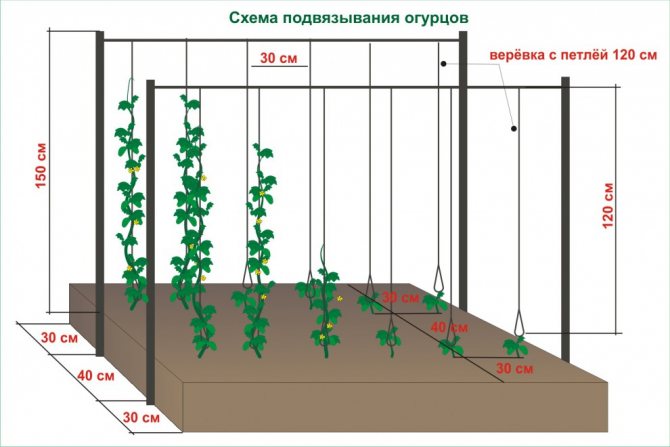

To get a larger harvest, it is necessary to make a trellis, which will serve as a support for future plants. It is easy to do it by digging in wooden pegs along the entire length of the garden. The supports themselves are tied with a scourge, for which the sprouts will subsequently hook.
Care
After the seedlings are planted, they are covered with a film that is stretched over wooden rods. It turns out a small triangular greenhouse. This is necessary to retain moisture. When the sprouts hatch, and this will happen in the third week, the film is gradually removed. In a very scorching sun, the film overlap is raised so as not to overheat the plants.
Watering
It is important to moisten the soil around the beds sufficiently to get a good harvest. For this, the plant should be watered moderately with water, the temperature of which is at least 15 degrees. In the initial stages, when the seedlings have not yet emerged, the water should be slightly lukewarm. After three weeks, on the fourth, you can already moisten the soil with cool liquid. After watering, the beds must be loosened with a rake. This is to prevent the formation of an earth crust, which will reduce the intake of air from the soil. Watch out for weather conditions. If weather forecasters transmit rains, then it is better to leave the beds unspilled.
The best time to water is early morning or late evening. When there is no strong heat, then moisten the soil. Thanks to this approach, the earth will absorb most of the moisture. It is necessary to pour directly under the roots. You can also lay the hose at the beginning of the garden bed and, by opening the tap valve a third of a turn, leave it for 15-20 minutes. With this method, it is important that there is a slight slope of the ground.
It is strictly forbidden to water the plant over the leaves. For direct sunlight, droplets of water on the foliage will act as a collecting lens and the plant will burn. Subsequently, this will be the beginning of the drying of the tops.
If the weather is hot, then it is necessary to put buckets of water near the beds. Evaporation will create a humid microclimate.
Top dressing
After the sprouts appear, the garden must be fed. Fertilizers need to be alternated. For this, mineral mixtures are purchased. They are used strictly according to the instructions on the package. In addition, cucumbers are watered with water in which rotted manure is bred. Subsequent fertilization is done at least once every 10-15 days.
Weeding
Weeds that develop near cucumber beds must be removed in time. If this is not done, then they can deplete the soil, which will certainly affect the yield. It is important to know that the roots of the cucumber crop are located close to the surface of the earth. Therefore, you cannot use a rake or a hoe. To remove harmful weeds, they are pulled out by hand. To reduce the growth of weeds, as well as to maintain soil moisture for a long time, mulching of the beds is done. A layer of sawdust is laid out on the ground near the garden bed. Straw is also used for mulching. The close location of plant roots to the surface of the earth requires hilling them. With a small hoe, they cover the stalks with earth, raking up small handfuls.
Disease treatment
Watering norms must be strictly observed. With excessive soil moisture, a white coating appears on the leaves of plants, which can completely destroy an individual seedling. If you find the onset of the disease, sprinkle the diseased bush with wood ash. In case of complete defeat, it is better to remove the seedling. Since the stems and foliage of a cucumber plant have a large amount of water, aphids gather on it.To avoid the appearance of a pest, you need to carefully weed the garden from weeds, fight ants, and also spray green spaces with chemicals from aphids.
Ants use aphids for food. To do this, they specially bring insect larvae to the leaves. Aphids get drunk with moisture, depleting the plant. After the insect has absorbed the maximum amount of water, it is taken away and a new one is brought.
When watering the sprouts with cold water, the cucumbers begin to turn black. The affected areas grow and dry out over time. High humidity can also cause this phenomenon. Stop watering after you notice blackening. Treat stems, leaves with Bordeaux liquid.
Features of picking seedlings of cucumbers
Cucumbers have a very delicate root system. Unlike tomatoes, transplants are not good for them. Broken hair roots do not regenerate, new ones take time to regrow, and the plant slows down without gaining any benefits.
The supporters of the diving procedure begin this event when the cotyledon pair of leaves of the cucumbers is fully opened and at least one real leaf appears.
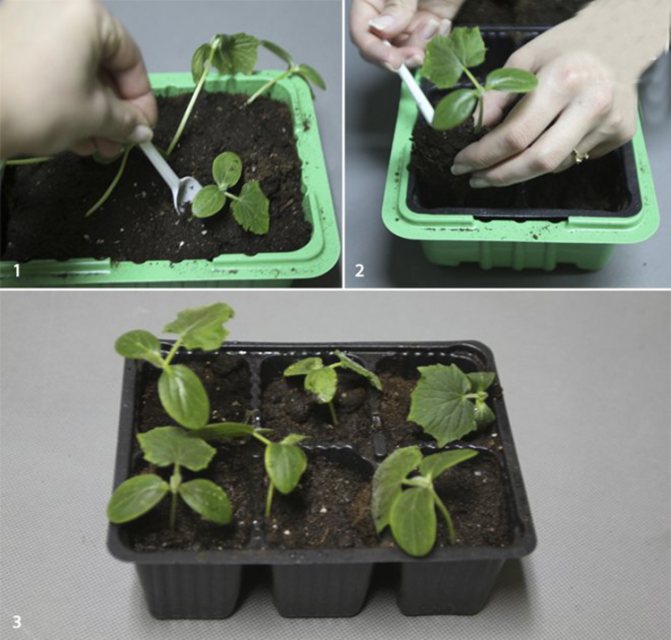

Pickling of cucumber seedlings follows the general rules. The main thing is to soak the ground well in the box in advance and transplant the roots, gently prying them with a spatula.
After transplanting, it is better to give the plants rest, leaving them for a day in a dark place and lowering the temperature to 18-20 degrees for three to four days. Then you can carry out a second feeding of the cucumbers. If the seedlings do not dive, then the second feeding is carried out two weeks after the first.
After which is it better to plant?
You cannot grow cucumbers in one place for 2 years in a row. It is best to plant them in the beds where cabbage, tomatoes, bell peppers, dill, peas grew.


Expert opinion
Stanislav Pavlovich
Gardener with 17 years of experience and our expert
Ask a Question
It is not recommended to grow the crop after related pumpkin plants (squash, zucchini). The plant feels uncomfortable in windy places.
Preparing seedlings for planting in open ground
In order for the plants to quickly adapt to outdoor conditions, they begin to harden them about ten days before planting. At the same time, the last top dressing is introduced.
The container is taken out into the air. You can install it for a day under a film in special, recessed greenhouses. The water temperature cannot be lowered throughout the growing season - these plants do not tolerate cold watering poorly.
Seedlings are planted in open ground after the formation of four true leaves and the establishment of stable warm weather.
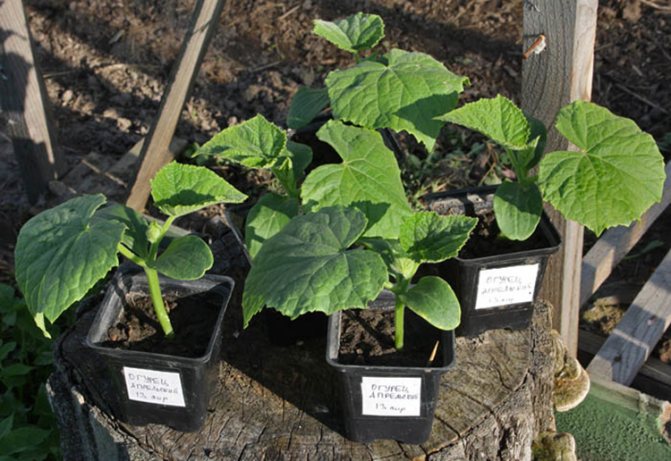

Preparatory stage
How to plant cucumbers, everyone decides independently. It is believed that a high yield can be obtained by planting seedlings under the open sky. If the climate is mild, the soil is fertile, then you can try to immediately sow seeds in the garden beds.
Experienced vegetable growers plant seeds several times at different time intervals, in the tenths of May and in the first days of June. This is done in case the cold returns. It is not worth sowing later, since the July heat and long daylight hours are bad for the development of young seedlings.
The first step in how to properly plant cucumbers in open ground is to select the right seeds. You can choose varietal or hybrid types of cucumbers.
Hybrids are bred on the basis of several varieties to obtain the desired characteristics. They are easier to care for, as they are less prone to disease, tolerate temperature fluctuations.
Another important criterion in the selection of seeds is the desired ripening time of the fruit. There are early, medium and late varieties. You need to choose a company only proven and proven from the best side.
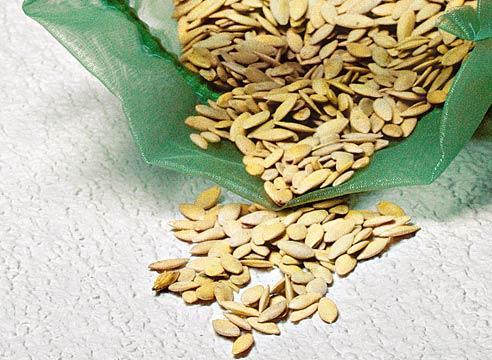

Only large and dense seeds are sown.After selection, they need to be disinfected, for example, by dipping them into a solution with potassium permanganate to get rid of bacteria on the shell. You can warm up the grains at a temperature of 60 degrees. This will allow the sprouts to sprout quickly and start bearing fruit earlier. Another useful procedure is soaking in nutrients.
In order for sprouts to hatch from seeds faster, many pre-germinate them.
Any humid environment in which the grains are placed for a while is suitable. You can place the seeds between two layers of a towel or use sterile cotton wool laid out in a plate.
If the seedlings of cucumbers will be grown at home, on the windowsill, then another method of germination is suitable. A layer of matter is impregnated in growth biostimulants, spread on a plate. The landing base is laid out on a damp base and covered with glass or film. A humid environment will facilitate rapid germination. On average, germination takes 2 to 7 days.
See also
Characteristics and description of the Masha cucumber variety, their planting and careRead
An important question is how to put the seed in the hole correctly when planting cucumbers. You need to spread the seeds with the sharp end up. It is from there that the root will grow, bending down. The sprout, making its way through the soil, cracks open the seed and pushes the leaves out. If sown with the tip down, then the sprout will come out to the surface of the earth with a shell and may die. Also, it is recommended not to plant the seed vertically with a blunt end down, but slightly at an angle.
We plant seedlings in the ground
It is reasonable to plan the location of crops on the estate for three to five years in advance, so that the soil does not deplete, and the vegetables do not get sick or degenerate.
A garden bed for cucumbers must be prepared in advance, bringing rotted manure under the previous plantings.
A place for cucumber beds must be chosen in an illuminated, wind-protected area. In warm climates, these can be furrows deepened on a shovel bayonet. For growing cucumbers in the north of the country, you can organize warm beds in a wooden case.
Such beds are prepared in advance. First, they knock down and install a wooden box according to the size of the future garden. The whole season you need to put organic matter in a box: food leftovers (except for meat and fatty ones), grape trimmings, chopped branches of fruit trees, fallen leaves. Over the winter and summer, all this decays; in the fall, you need to fill the compost soil with a layer of 10 centimeters from above. In early spring, cover the bed with an old film. Organic matter gives off heat, and the bed warms up well. This makes it possible to plant cucumbers at an earlier date.
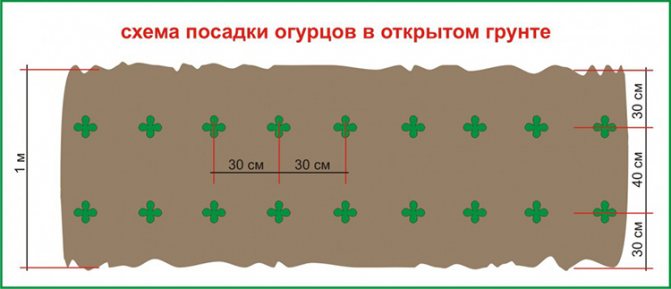

The usual landing is started when the ground temperature warms up by 12-14 degrees. Fertilizers (humus and mineral complex mixtures) are applied to the ground. After that, the pots with seedlings are well filled with water, and the plant is extracted from them. The less the root system is damaged during transplantation, the better.
The cucumber is deepened along the cotyledon base, poured with warm water under the trunk. Sprinkle the place of watering on top with a layer of loose compost. At first, it is advisable to shade a bed with transplanted seedlings with a black non-woven material.
Two bushes are planted per square meter - these plants need a lot of space for weaving.
The best precursors for cucumbers
In order for the cucumbers to grow well and not get sick, it is necessary to choose a place for them taking into account the rules of crop rotation:
- previous plants should enrich the soil with the elements they want, not make it too acidic;
- it is good if the root system of the previous plants lies at a different depth than the cucumber;
- cucumbers with previous plants should not have common pests and diseases.
Tomatoes and cabbage perfectly fit this description. Cucumbers will grow well in the garden after onions, garlic, legumes, carrots and beets.
Neighbors are also very important - ideally, it is corn or sunflower, as a screen from cold winds. Also do: lettuce, beets, beans and savory.
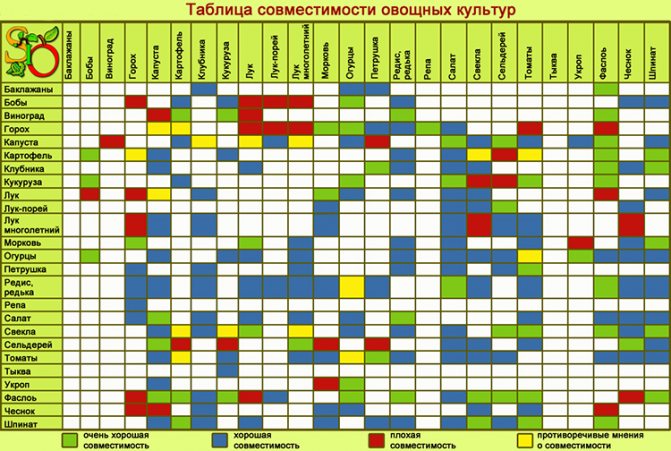

Planting method directly into open ground
Cucumbers begin to be sown directly into the ground in late May or early June. As the lashes dry, new seeds can be planted to harvest until late summer. For these purposes, it is better to make a garden bed in partial shade, it can even be under trees, outside the crown.
Preparing the soil for sowing seeds is similar to cultivating seedling beds.
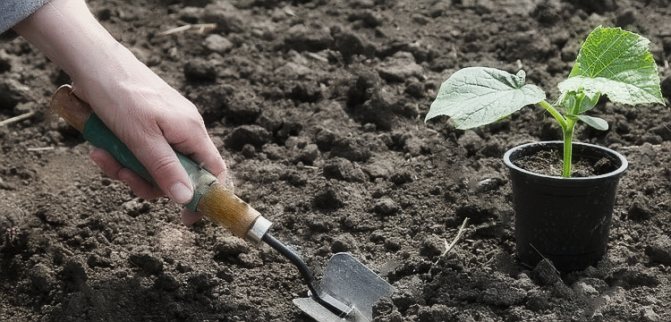

Correct planting of seeds
When planting directly into the ground, it is not recommended to germinate the seeds first. They are sown in wells heavily flooded with water to a depth of 1.5-2 centimeters, maintaining a distance between seeds of 20 centimeters and between rows of 60 centimeters.
After planting, the bed is covered with cellophane wrap to retain moisture and elevated temperatures. If the street is 25 C and higher, then it is not necessary to do this during the day.
Before the seeds germinate, they make sure that the soil in the garden is not covered with a crust, it is regularly moistened and loosened. Loosening is carried out until 4-5 true leaves appear, until the plant enters the phase of horizontal growth. Top dressing for sowing cucumbers is applied by analogy with cucumber seedlings.
Seat selection
I chose a sunny and calm site for seeds. There I grew peas. Just the most wonderful predecessor, along with tomatoes, onions and early potatoes. Seeds can be planted, as it turned out, in places where there was melon, melon or vegetable marrow, only 2-3 years ago.
Contrary to all the learned speeches, so as not to dig the ground, in the fall I lifted the entire site on the bayonet of a shovel. She did not break the boulders, the soil froze well over the winter. I chose all plant residues. If the soil is acidic, it must be limed. Which I did.
The spring was good and already in April the boulders were easily broken, and I quickly leveled the ground with a rake. The site turned out to be clean.
Cucumber care
Proper care allows you to extend the fruiting phase of cucumbers. First of all, the yield is lost when there is a lack of heat and moisture. If the summer is cool, then at night the cucumbers continue to be covered with cellophane.
Sometimes it is necessary to set up a non-woven tent for the day to protect from the wind or too hot sun.
Watering and feeding
Watering cucumbers is carried out only with warm, settled water, preferably no later than 16-00 o'clock, so that the moisture on the leaves has time to dry before nightfall. This should be done at least once every two days. Frequent watering erodes the fertile layer, so periodically it is necessary to add rotted manure or compost near the root.
From the beginning of fruiting, liquid organomineral dressings can be added to the water.
Root dressing of cucumbers
With this type of feeding, nutrient mixtures are introduced into the soil, under the root of the plant. They can be held once a week or ten days. The composition of the mixture is chosen based on the external signs of a lack of a particular substance:
- if the fruits have pointed, underdeveloped tips, then the plant needs nitrogen - 1 tablespoon of urea per 10 liters of water;
- expanding, short fruits indicate a lack of potassium - 2 glasses of wood ash per bucket of water;
- you can prevent the leaves from drying out by feeding from 4 tablespoons of superphosphate per 10 liters of water;
- to stimulate growth, they are fed with a fermented infusion of nettle and other weeds - a large container is filled with chopped grass, water is poured and defended for a week under a lid;
- whey supplements (1 liter per bucket of water) serve the same purpose.
Cucumbers are fed on damp ground, early in the morning.


Foliar dressing
You can also feed cucumbers by spraying nutrients from a spray bottle onto the leaves. Foliar dressing is often used for preventive purposes.Along the way, such procedures help to solve the problem with many pests and diseases.
Spraying is best done early in the morning, choosing cloudy days, so that the moisture has time to evaporate before bright sunlight hits the leaves. On such a day, you can stretch a non-woven material over the treated bed.
- To increase the yield, before flowering, cucumbers are sprayed with a solution of boric acid at the rate of 10 g per 10 liters;
- spraying with a solution of 1 g of calcium nitrate in a liter of water strengthens the immunity of cucumbers;
- spraying with a weak solution of potassium permanganate is saved from pests such as spider mites and aphids;
- from late blight it is useful to water the leaves from above with a daily infusion of wood ash (0.5 liters per 13 liters of hot water);
- the prevention of powdery mildew and root rot is spraying with 30 drops of iodine and a liter of milk whey per 10 liters of water;
- for the same purposes, you can use bread (one loaf per 10 liters of water) or yeast (10 g per 10 liters of water) infusions with 10 drops of iodine;
- spraying with a solution of urea at the rate of 15 grams per 10 liters of water enriches the plant with nitrogen and helps fight weevils and aphids.
The procedure is carried out in the same way as root feeding - once a week or a little less often. If there is a fear of burning the leaves, then initially you can take half the dosage of the nutrient mixture and increase it gradually.
Site and soil requirements
Caring for cucumbers begins with choosing the right place on the site and preparing the soil. Cucumbers are not planted after the crops of the pumpkin family, to which they themselves belong, these are zucchini and pumpkins. These plants have common diseases and pests, therefore, the risk of planting infection increases already at the initial stage of the growing season.
Cucumber whips develop poorly after squash and gourds - melons and watermelons. Cucumbers are planted with care after spicy herbs, as they take out a large amount of nutrients from the soil.
Any root vegetables - carrots, beets, potatoes - will be good predecessors. Only after them does the soil need to be disinfected with a solution of copper sulfate. A cucumber grows well after cabbage, onions, tomatoes and any vegetable crops, under which organic matter was laid last season.
For lack of space in small areas, cucumber is often planted with strawberries, garlic and corn. And sometimes the beds with corn or Jerusalem artichoke are specially alternated with cucumber plantings to protect the latter from drafts.
Fertilizers on the site where the cultivation of cucumbers is planned is applied in the autumn digging. You can act differently: sow green manures before winter, for example, white mustard or cereals, and in early spring, close up mineral-organic nutrient compositions.
In any case, 10 m2 will need 50 kg of humus (fresh manure can be applied in autumn) or compost from plant residues, as well as 200 g of potassium salt, ammonium nitrate, double superphosphate.
Ammonium nitrate is introduced only in the spring digging, since the nitrogenous compounds contained in this fertilizer are unstable, and it makes no sense to introduce them in the fall.
Bush formation
Cucumbers are creeping or climbing plants. Removing excess lashes, tying, creating favorable conditions for fixing cucumber tendrils on vertical surfaces - all this also contributes to an increase in fruiting times.
The way the bush is formed depends on the variety, the growing method and the type of garter.
In no case should you pinch and remove stepchildren with your hands. For these purposes, it is necessary to use scissors or secateurs, periodically lowering the blades into a solution of potassium permanganate.
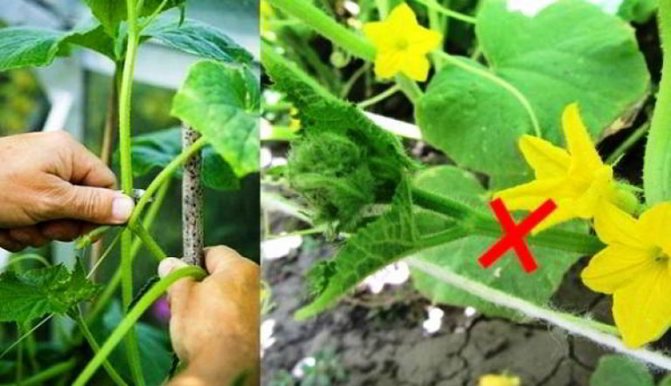

Topping
Horizontal cultivation is the most common way to cultivate cucumbers outdoors.The correct strategy in this case is to pinch the central shoot, which has reached a length of one meter (some owners do this over the tenth leaf). The central lash stops developing. And the stepchildren are actively growing, braiding the earth around the root. It is on them that the bulk of the ovaries is formed.
Someone recommends pinching the stepson's lashes, leaving two or three sheets on them.
Pinching horizontally growing plants in this way is a classic technique, worked out over decades of growing bee-pollinated varietal cucumbers in the open field.
When starting to form a bush, one must understand that hybrids develop differently than bee-pollinated varieties. You cannot pinch them using the same technique.
For modern hybrids with a predominantly female flowering type, the vertical method of growing is more suitable while maintaining a long main shoot.
Stepping
For vertical cultivation, the method of forming in one or two lashes is usually used.
When growing a cucumber bush in one lash, all stepchildren are removed as they grow, and the central lash is allowed to grow up the trellis, gently twisting it counterclockwise onto the support. When it grows to the top of the support, it is allowed to run parallel to the ground or lowered to grow down another meter. Then pinch.
Formation in two lashes occurs in a similar way, but in addition to the central shoot, one more stepson closest to the root is left. Scourges grow in parallel.
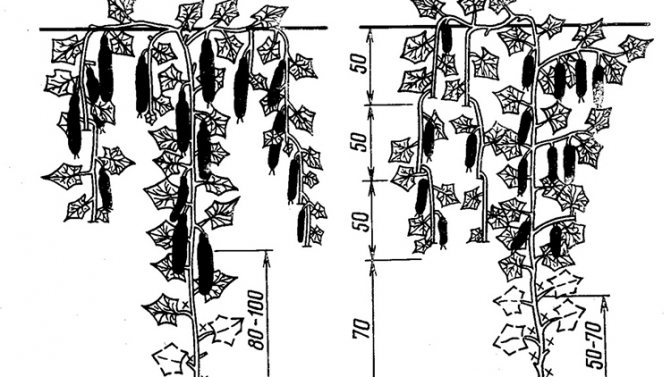

Home preparation
The scheme for planting cucumbers in the open field using grown seedlings has its own characteristics. In early May, seeds are planted in boxes with soil and placed on a well-lit, warm windowsill. It is recommended to prepare the land on the basis of peat, potash and ammonium nitrate with the addition of sawdust.
How to sow grains? In the prepared moistened soil, depressions equal to 1 cm are made and the grains are placed there. After all the seeds have been planted and sprinkled with earth, the container is covered with glass or foil. As soon as most of the seedlings emerge, the film is removed.
The plant is ready for transplanting when 4-5 leaves appear (this is about 25 days after planting the seeds). It is recommended to start hardening the seedlings a week before transplanting. It is useful to take it outside or on an open balcony every day. The day before transplanting, the soil is well watered.
See also
How to correctly pick cucumbers at homeRead
Planting seedlings of cucumbers in open ground is carried out on a sunny, dry day. Together with an earthen lump, the sprouts are placed in open ground, without deepening too much. It is only recommended to sprinkle the roots. With deep planting, the risk of rotting will increase.
How deep can cucumbers be planted? The depth of the hole should be equal to the size of the earthen lump, which was enveloped by the roots of the seedling. The spacing between the seedlings should be about 18 cm. The distance between the rows is about 35 cm. Once the plant is planted, the soil is watered and mulched.
How to tie cucumbers
When tying cucumbers, the main thing is not to damage them. It is necessary to use wide nylon or cotton ribbons, do not overtighten the stem. If possible, only create conditions for natural weaving and support the plant.
Above, two main methods of growing bushes have already been described and it is noted that it is more convenient for open ground to form horizontal whips. This is due to the fact that plants lying on the ground suffer less from wind and bright sunlight. However, if you set an arc over a horizontal bush and start several shoots along it, this will allow the cucumber to branch over a larger area.
Above the furrow with cucumbers weaving along the ground, you can also install four supports and stretch several lines of wire or twine on them parallel to each other. A low-growing bush will curl along these supports.
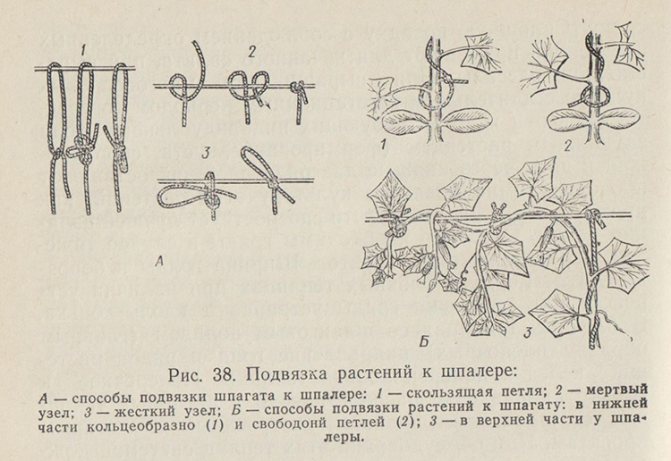

Vertical cultivation is suitable for tall varieties or hybrids planted in a closed area from the wind. It should be noted that this method is more time consuming, and the plant grown in this way needs more attention.
Tying methods:
- the most successful is weaving on a grid - a support is installed near the garden bed, on which a nylon or plastic net is fixed, the central shoot of the plant is fixed on it vertically;
- weaving on a thin vertical support - a vertically stretched twine or a rod stuck into the ground is used as a support for the whip;
- weaving on a V-shaped support is suitable for growing a bush formed from two lashes;
- weaving on a pyramid - several bushes are allowed from different sides onto the pyramid from twine or wire stretched to a common rigid support.
Some varieties of cucumbers can be used to braid gazebos and decorative hedges.
Cucumber: the secrets of growing
Each gardener has his own growing secrets. Some use the seedling method, others sow seeds directly into the ground, they can be germinated or dry. The first option is suitable for those who want to get the harvest 2 weeks earlier.
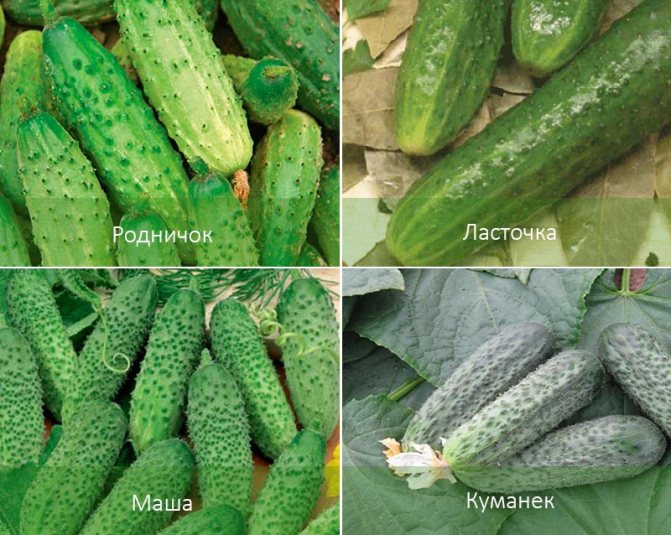

In open field conditions, cucumbers can be grown in several ways:
- Warm beds, constructed of wooden boards or a bulk earthen rampart, inside of which there is overheating organic matter. The rise in temperature is due to the emitting carbon dioxide.
- Plants tied to trellises.
- Shelters made of film or material with or without a frame.
- In a barrel.
- In a pile of compost.
- Spreading out in the beds, this type of cultivation requires a sufficient amount of free land.
The features of this vegetable crop are: the need for water and proper irrigation of the beds, sufficient illumination, warmth, garters to supports and organic fertilizers.
Techniques for increasing the yield of cucumbers
With timely watering and fertilization, a competent garter, the following methods can also increase the number of fruits:
- when the cucumbers grow, the first four ovaries must be removed so that the plant gains strength before it starts spending them on the ripening of the crop;
- when a large number of "male" flowers are formed, cucumbers need to arrange stress - reduce feeding, lower the temperature or skip watering;
- spraying the foliage with a weak honey solution (1 teaspoon per liter of water) will attract insects for better pollination and enrich the plants with microelements;
- when growing hybrids, it is worth planting several bushes of a bee-pollinated variety next to them;
- ripe cucumbers must be picked daily, carefully cutting them off with disinfected scissors.


How to harvest your cucumber seeds
If you liked a certain variety, then it is very easy to propagate it: leave 1-2 small greens on the bush until fully ripe. Wait until they turn yellow, the stalk begins to dry out. Collect the fruits, leave them at home on a saucer or tray.
When the cucumbers begin to dry out, carefully remove the pulp, select the seeds. Let the seed dry, then put it in a jar, paper envelope. I note that this way it will not be possible to propagate hybrids - they do not produce seeds that repeat the mother plant.
That's all the important features of planting and caring for cucumbers. Be sure to be guided by the plant itself: bitterness of zelents, yellowing of leaves, barren flowers - this indicates a lack or an excess of watering, feeding, light. Try to carry out prevention on time, do not forget to water and fertilize the cucumbers, and then they will surprise you with a bountiful harvest.
Diseases and pests of cucumbers
Cucumbers are quite vulnerable to common garden pests and diseases such as powdery mildew, late blight, and root rot.
Diseases can be prevented by observing the rules of hygiene of the garden plot:
- timely and high-quality harvesting and plant residues;
- following the rules of crop rotation;
- disinfection of seeds and tools;
- purchase of only high-quality seed.
Prevention of diseases and pest attacks also serves the introduction of appropriate foliar dressings (as described in detail above).
Several recipes for chemically harmless pest preparations that can be used at the first sign of aphids or ticks:
- a glass of tobacco, a glass of wood ash, a tablespoon of shavings of laundry soap are poured with 10 liters of boiling water;
- half a bucket of chopped onion husks, one glass of wood ash is poured with boiling water, a tablespoon of shavings of laundry soap is added there, then they act in a similar way;
- 10 g dry red pepper, 100 g tobacco, 2 tablespoons of soap shavings per 10 liters of boiling water;
The above funds are insisted for a day, filtered, and then the leaves are sprayed from bottom to top. Then be sure to loosen the ground in order to destroy the fallen pests.
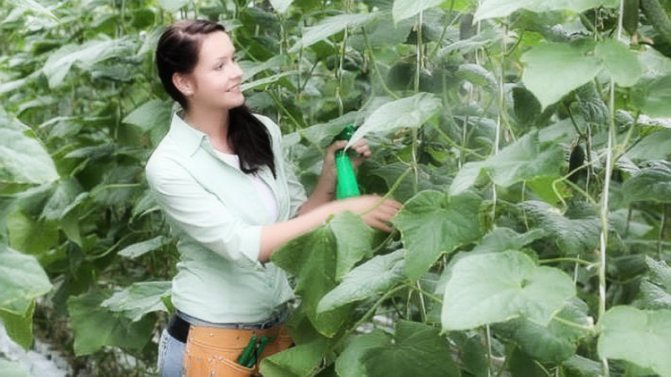

Compared with ready-made insecticides, these drugs are less effective, but do not cause harm. It is worth resorting to them several times a season, as a preventive measure, so that you do not have to later use the "heavy artillery" of industrial chemistry.
What difficulties can arise when growing cucumbers
The plant can "tell" what it lacks:
- Yellow border on old or lower leaves. Lack of potassium.
- Dark green streaks on a yellowed leaf plate. Lack of iron.
Problems are treated by introducing necessary micro and macro elements into the soil. The most popular is dolomite flour, a source of calcium and magnesium.
Diseases
The main diseases of cucumbers:
- powdery mildew;
- gray rot;
- olive spot;
- peronosporosis;
- root rot.
To prevent them, you need to turn to prevention from time to time (especially at the initial stage of growth) - do not forget to treat the plants with Trichodermin or Fitosporin.
Pests
The main enemy of cucumbers is the melon aphid. Its carriers are no less dangerous - ants. Other pests are whiteflies, spider mites. They fight them with simple but effective means:
- Spraying the leaves with an aqueous mixture of superphosphate and potassium chloride.
- Treatment with soapy water with the addition of makhorka.
- Irrigation with hot pepper solution.
- Spraying with onion peel infusion.
There are effective chemicals against all pests, but I still advise you to contact them last.
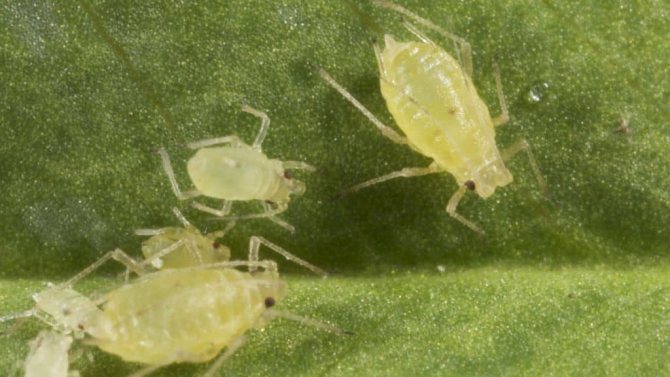

aphids in the garden
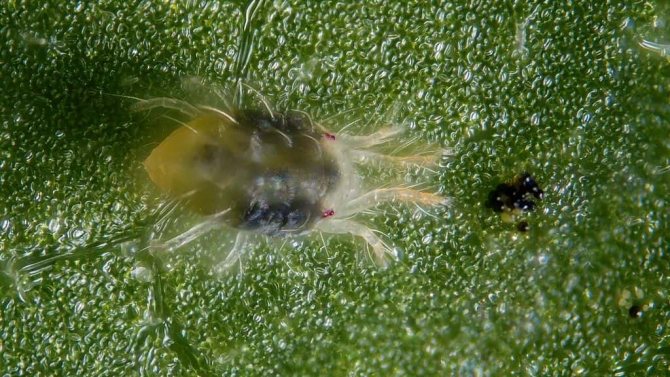

spider mite on cucumbers


whitefly on cucumber
Varieties and hybrids of cucumbers
When choosing varieties for planting, you need to focus primarily on local varieties, or bred in similar climatic conditions.
Giving preference to a hybrid or choosing varietal cucumbers is an individual choice of the gardener. With the available variety (more than 500 varieties and hybrids), you can try out the best of the proposed options on your site.
Hybrids
They are usually devoid of bitterness. They have higher immunity. Every year, more and more hybrid variants appear for different purposes.
The only drawback of hybrid cucumbers is that you cannot harvest seeds from them. To resume the cultivation of a cucumber with remarkable characteristics next year, the planting material will need to be purchased again.
Some of the most popular modern hybrids are:
Herman F1 - parthenocarpic, high-yielding early ripe hybrid, resistant to diseases, fruits up to 10 centimeters long, pimply without bitterness.


Miranda F1 - a universal ultra-early ripening hybrid with high immunity, fruits up to 11 centimeters long, without bitterness.


Chinese cucumber - a tall hybrid, vertical cultivation is shown, fruits reach 60-70 centimeters in length, have exceptional taste, are devoid of bitterness.
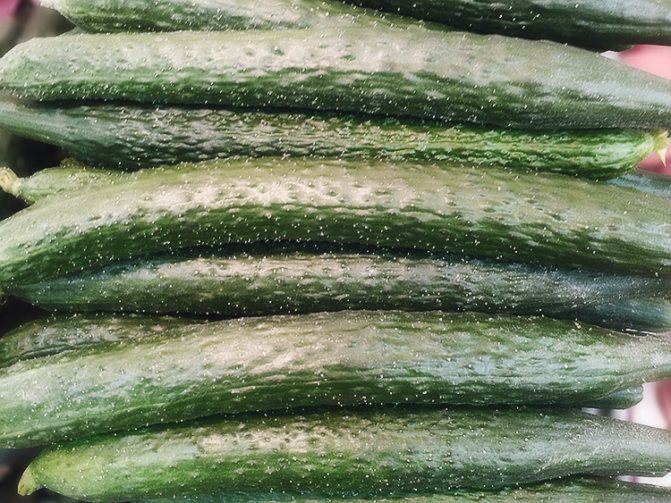

Masha F1 - parthenocarpic hybrid, early ripening, small-bumpy, fruits up to 11 centimeters, have a sweetish taste, devoid of bitterness, good for conservation and fresh consumption.
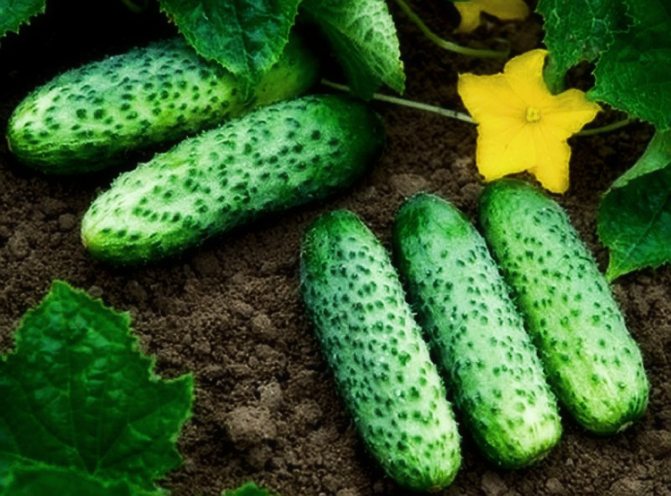

Friendly family F1 - parthenocarpic hybrid, has a high yield, short fruits with longitudinal stripes are well suited for conservation, without bitterness.
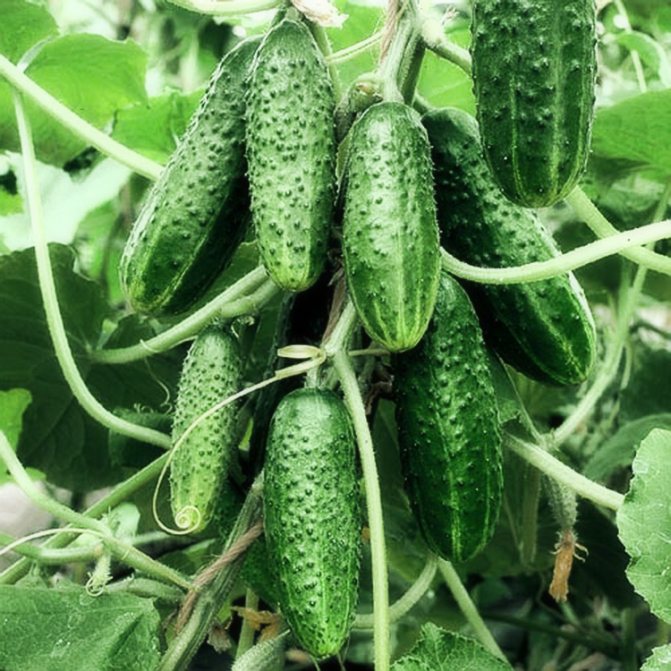

Mr. Summer resident advises: recommendations for growing cucumbers
In order for the harvest to be plentiful, and caring for the plant does not cause inconvenience, there are several more tricks:
- The most convenient way to grow is vertical. Weed control is minimized by mulching the soil.
- During the fruiting period, the bushes may not withstand the weight of the cucumbers and break; in order to avoid this, additional support is required.
- Wooden pegs can rot if wet. To prevent this from happening, the ends, before placing them in the ground, are treated with a solution of salt with gasoline per 1 liter of 200 g, and the upper part with 5% copper sulfate.
- If there is a lot of sunlight in the selected area, you can plant tall crops such as sunflowers or corn. When they grow up, you can attach the stems of the cucumbers to them, planted on the sides.
- For tying shoots to the rods, strong, two-core wires that do not sag under the weight of zelents are perfect.
- Stretched plastic wrap will protect the bushes from prolonged rains. And the soft material will protect from the cold, which can be used to cover the trellises with plants attached to them.
- For small gardens, structures made of bicycle wheels and metal pipes are suitable. In this case, the lashes are tied to the rim or spokes through one in a circle.
- Instead of ordinary water, irrigate acidified water. Add apple cider vinegar to settled or rainwater, 1.5 tbsp is enough for 200 liters.
Growing cucumbers in a summer cottage is troublesome, but exciting. With the right choice of variety and consistent adherence to the rules of caring for this crop, you can get a rich harvest of tasty fruits without bitterness.
Preparatory work before sowing


You need to take care of where and in what land you will grow cucumbers in advance. It is impossible to break a bed anyhow just before sowing. Experienced growers always plan their planting and take into account the sequence of planting crops.
Seat selection
A sunny area protected from cold winds is best suited for planting cucumbers.
If the place is open, tall crops can be planted around the perimeter, for example:
- sunflower;
- corn;
- legumes;
- potatoes.
They will serve as a kind of curtain that protects the cucumber garden from adverse external conditions. A nearby forest or building walls can also serve as protection.
Use all the possibilities of your site. In an open place, it is unlikely that you will be able to get a good harvest of cucumbers. Under the influence of the wind, the soil will dry out, the lashes will be tangled.
On a note! If the site is located in an area with a close occurrence of groundwater or where moisture stagnates, it will be necessary to make raised beds.
Soil and bed preparation
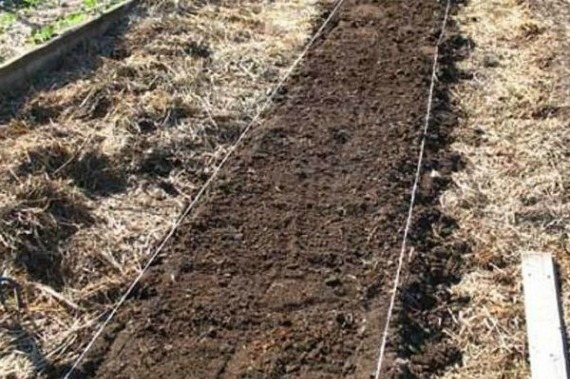

Cucumbers like well-warmed, structured, fertile soil. Most of all, black soil, sandy loam and light loams are suitable for them. In southern regions, preference should be given to heavier soil, which retains moisture longer.
It is better to arrange the beds from west to east. When planning the planting of cucumbers, it is advisable to add rotted manure under the previous culture. If this has not been done, in the fall, the soil is fertilized with infusion of mullein or bird droppings and complex mineral fertilizer.
You can build a warm bed from any plant debris that has accumulated on the site.
- This can be fallen leaves, tops, hay, straw, small branches, food waste. All materials must be damp.
- The mass is mixed and laid in a layer 30-40 cm thick, after which it is tamped, watered with a solution of copper sulfate for disinfection and the soil is poured on top with a layer 10-12 cm thick.
You can equip such a bed in autumn or early spring. In the process of decomposition, organic matter will release heat and carbon dioxide, which is necessary for good plant growth.
On a note! So that the bed does not lose its shape, it is fenced around the perimeter with a wooden box or slate.
Accounting for predecessor plants
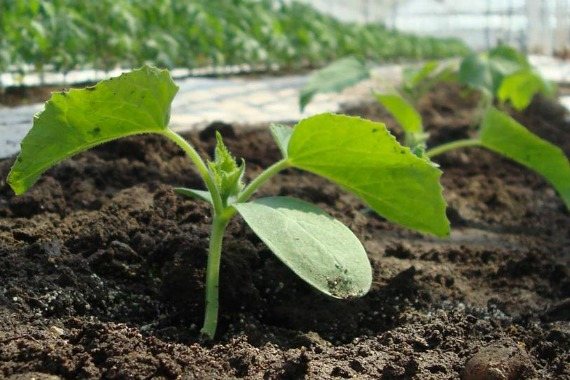

According to the rules of crop rotation, cucumbers can be planted after cabbage, potatoes, radishes, beets, onions, and garlic. Legumes are considered the best predecessors. They saturate the soil with nitrogen compounds and also improve the structure of the soil.
After planting root crops, the top layer of the soil remains unexhausted, it retains enough nutrients that contribute to the full development of cucumbers. Cabbage also gets its nourishment from the deep layers of the soil. Onions and garlic saturate the soil with phytoncides, which reduces the risk of disease in follower plants.
Neighborhood with other cultures
Sometimes there is a need for compacted plantings and then the question of a favorable neighborhood arises. In the immediate vicinity of cucumbers, you can plant corn, some summer residents even tie cucumber lashes to its stems. The root systems of crops are located at different levels, so there will be no competition for food.
Cabbage will also be a good neighbor. Both vegetables are moisture-loving, which makes planting easier. Near neighbors such as peas and beans, cucumbers produce a good harvest.
The neighborhood with strawberries will be quite successful. Onions and garlic can be planted in the aisles to cucumbers, both crops should be at a distance of half a meter from the cucumber bushes. Good neighbors are beets, sunflowers, grapes, calendula, nasturtium, spinach and celery.
Warm beds for early harvest
A warm bed is a great way to get early cucumbers in May, especially if the spring is chilly. In addition, such a bed is also an additional top dressing.
Two types of warm beds are used: buried and raised. These beds resemble a multi-layer sandwich, where organic fertilizers serve as ingredients. It is good to make raised beds. In such beds, excess water can go away during rains.
The advantage of a layered bed is as follows: when organic matter decomposes, a double effect is obtained - heat and nutrition.
It is preferable to make such a bed in the fall, so that its components rotted during the winter, then the bed will be ready for the spring planting of seedlings.
Here are some rules for making a warm garden bed:
- you need to choose a spacious, sunny place;
- before filling the next layer, pour the bottom one with water so that the layers are always wet;
- to fill the beds, take only parts of healthy plants, without fungal infections and damage by insect pests; the width of the bed is chosen arbitrarily, but not more than 1 meter, and the depth is the size of two bayonets of a shovel with a small margin, which is about 50 cm;
- the bottom layer of the bed filling consists of large coarse waste, which takes more time to decompose; it can be thin branches of deciduous trees, thick stems, small wood waste;
- the next layer consists of coarse herbaceous plants, peelings from vegetables (boil potato peelings beforehand to avoid their germination), soft stems;
- leaves and freshly cut grass without seeds are laid on top in a thick layer; the grass layer must be well compacted in order to avoid the formation of irregularities; add complex fertilizer: nitroammofosk - 1 tbsp. a spoon per square meter - and a glass of wood ash, you can fill it with a manure solution with or without straw;
- cover such a filling with fertile soil 15 - 20 cm thick;
- cover the finished bed with a dark film.
For more information on creating warm beds, read the article The right beds - less work, more harvest.
You can make a warm bed in the spring, but in this case, the bed is filled only with soft green mass, which is quickly processed in the ground, and vegetable food waste. It is especially good to use nettle without roots, clover, dandelion, onion peel. Mix with compost or vermicompost. Pour boiling water over, cover with a dark film. Seedlings are planted in a few days.
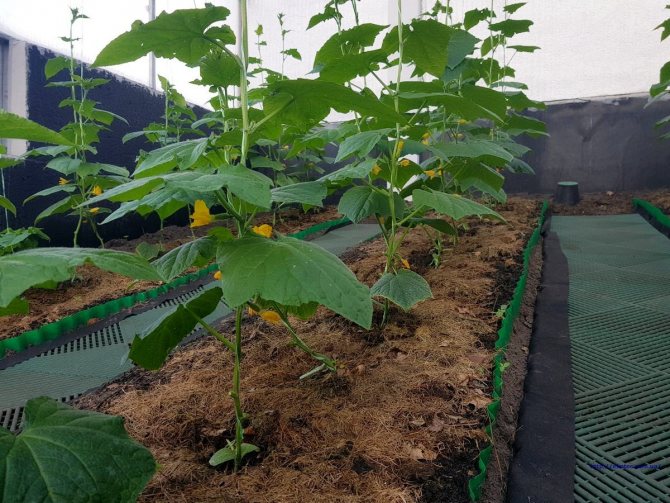

Growing cucumbers in warm beds significantly speeds up their fruiting. <>

